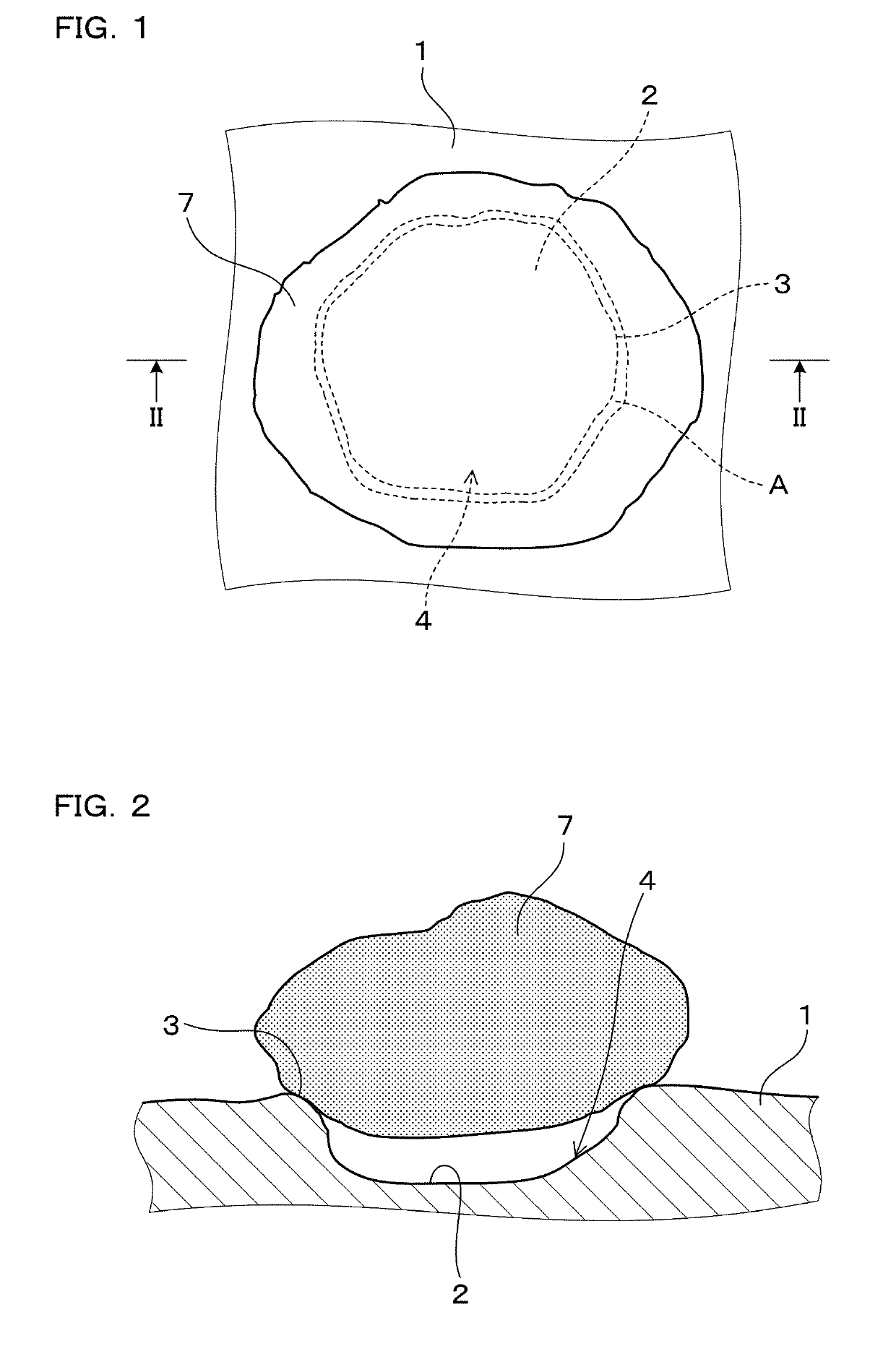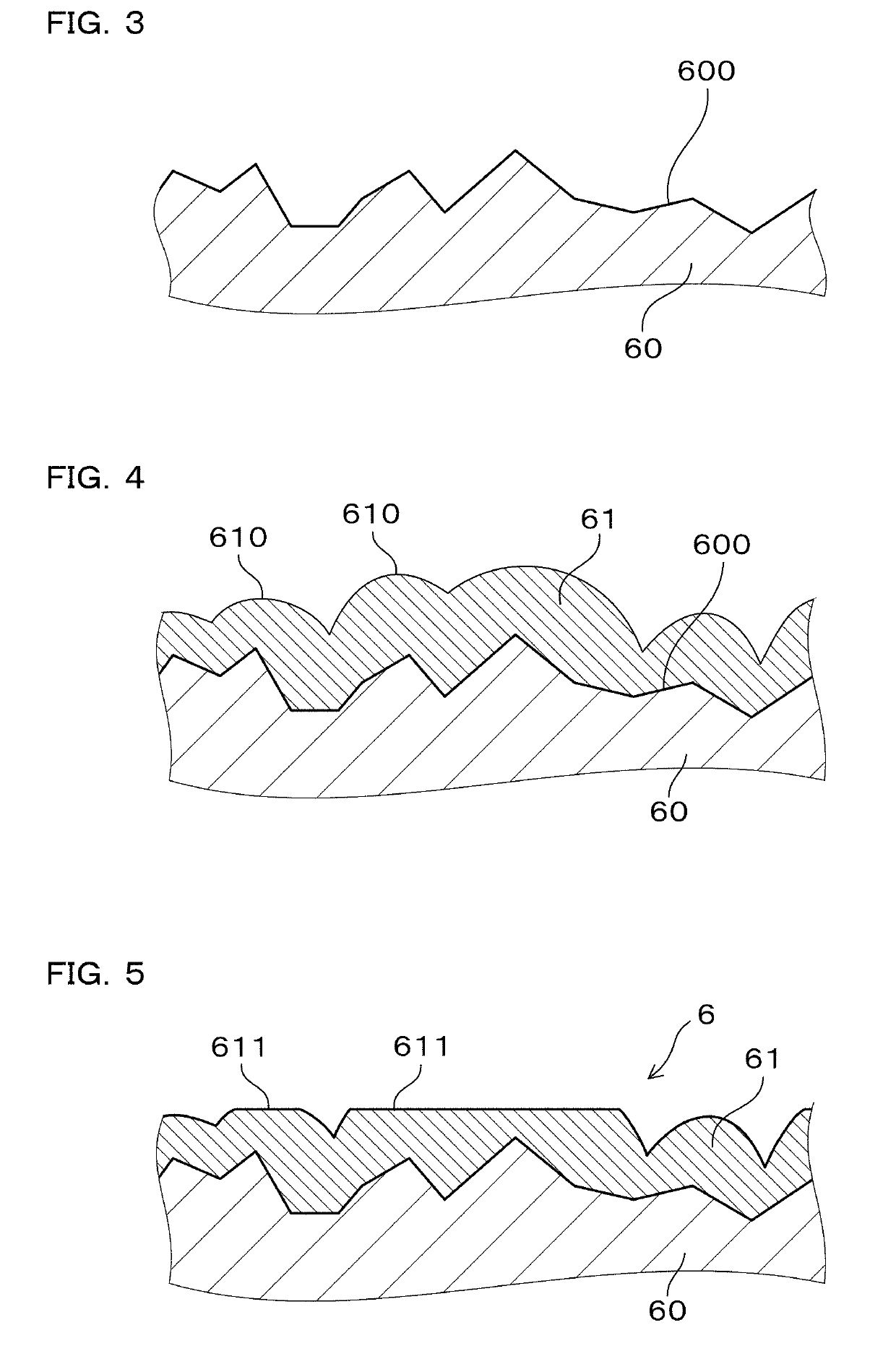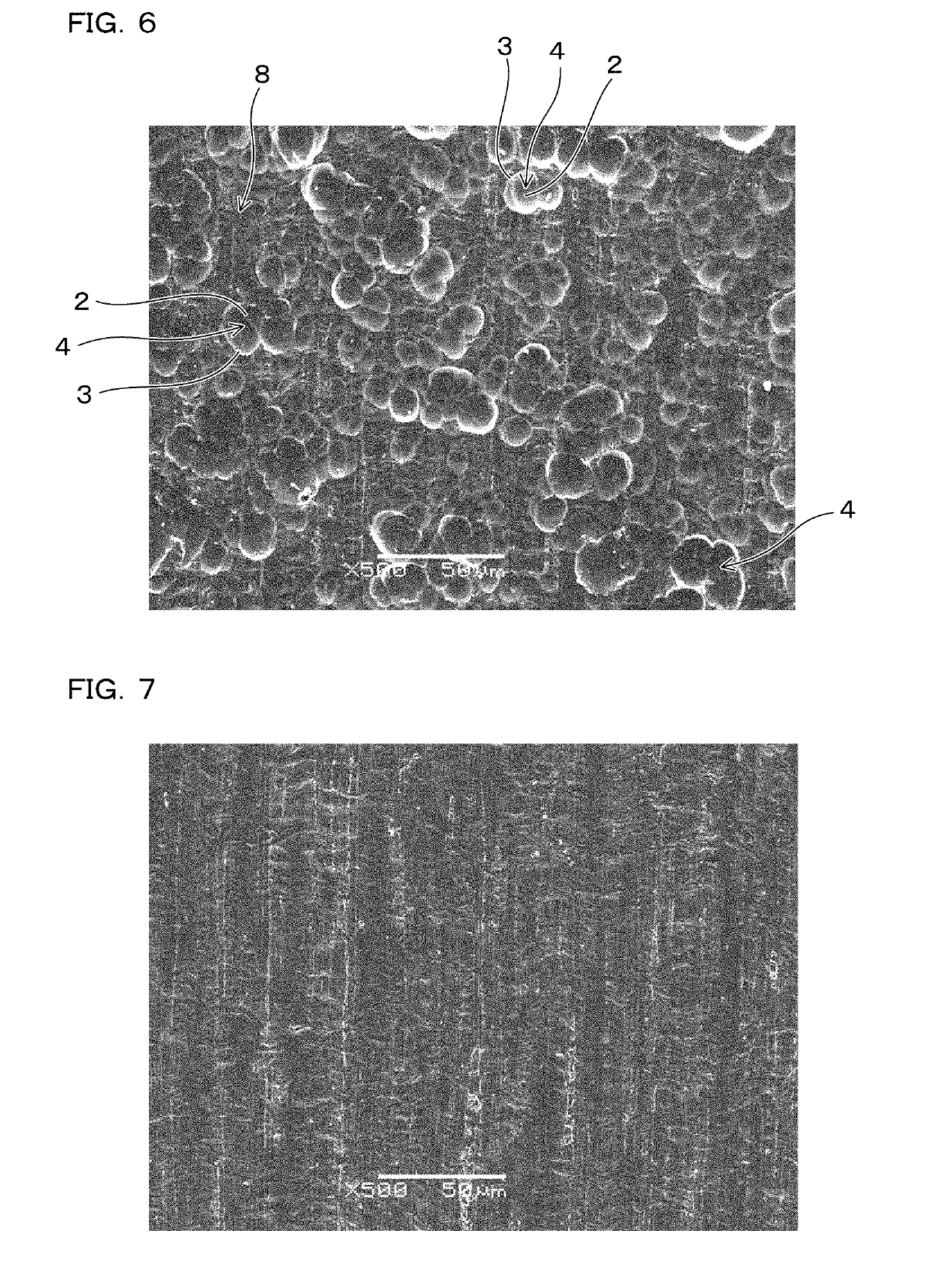Current-collector metal foil, current collector, and current-collector-metal-foil manufacturing method
a manufacturing method and metal foil technology, applied in the field of current collector metal foil manufacturing method, can solve the problems of insufficient adherence to an active material and adherence of the active material to the metal foil, and achieve satisfactory electrical connection, reduce contact resistance with the active material, and reduce the effect of contact resistan
- Summary
- Abstract
- Description
- Claims
- Application Information
AI Technical Summary
Benefits of technology
Problems solved by technology
Method used
Image
Examples
working examples
[0063]Working examples of the above-mentioned current-collector metal foils and the above-mentioned current collectors are explained below. A current-collector metal foil 1 comprises, on both surfaces, numerous recessed parts 4 (refer to FIG. 1 and FIG. 2), each recessed part 4 having a bottom-surface part 2, which is sunken down more than its periphery, and an edge part 3, which surrounds the bottom-surface part 2 and is raised above the bottom-surface part 2.
[0064]The current-collector metal foil 1 was prepared by passing, one or more times, the metal foil between a pair of roughening rolls 6 (refer to FIG. 5) prepared in advance, and performing a transfer process in which the contours of the roughening rolls 6 were transferred to the metal foil. Subsequently, the active-material-containing layer was formed on both surfaces of the current-collector metal foil 1, and thereby the current collector was prepared. The configuration and manufacturing method of the current-collector meta...
working example 1
[0065]The pair of roughening rolls 6 was prepared in advance based on the procedure below. First, shot blasting was performed on a pair of rolling rolls 60 using grit-blasting particles having a particle size of 40 μm, and thereby a surface 600 of both rolling rolls 60 was roughened as shown in FIG. 3. Next, a chrome-plating treatment was performed on the surface 600 of each rolling roll 60 to form a chrome-plated film 61. The chrome-plating treatment was performed in a Sargent's bath, containing 250 g / L of chromic anhydride and 2.5 g / L of sulfuric acid, and under the conditions of a temperature of 50° C. and an electric-current density of 30 A / dm2. The film thickness of the chrome-plated film 61 was set to 5 μm. As shown in FIG. 4, the chrome-plated film 61 preferentially adhered to the pointed portions of the surface 600, thereby forming numerous protruding parts 610 that are substantially spherically shaped.
[0066]Subsequently, the pair of rolling rolls 60, on which the chrome-pla...
working example 2
[0069]A pair of the roughening rolls 6 was prepared the same as in working example 1, excepting that the particle size of the grit-blasting particles and the rolling load in the process of flattening the peak parts of the chrome-plated film 61 were changed to the conditions shown in Table 1. Using the obtained roughening rolls 6, the contours of the roughening rolls 6 were transferred to a rolled-copper foil, having a thickness of 10 μm, based on conditions the same as in working example 1, and thereby metal foil E2 was obtained. The average Feret diameter Lave of the recessed parts 4 on metal foil E2 was 10.1 μm, and the depth of the deepest recessed part 4 was 2.0 μm.
PUM
| Property | Measurement | Unit |
|---|---|---|
| Feret diameter | aaaaa | aaaaa |
| Feret diameter | aaaaa | aaaaa |
| Feret diameter | aaaaa | aaaaa |
Abstract
Description
Claims
Application Information
 Login to View More
Login to View More - R&D
- Intellectual Property
- Life Sciences
- Materials
- Tech Scout
- Unparalleled Data Quality
- Higher Quality Content
- 60% Fewer Hallucinations
Browse by: Latest US Patents, China's latest patents, Technical Efficacy Thesaurus, Application Domain, Technology Topic, Popular Technical Reports.
© 2025 PatSnap. All rights reserved.Legal|Privacy policy|Modern Slavery Act Transparency Statement|Sitemap|About US| Contact US: help@patsnap.com



